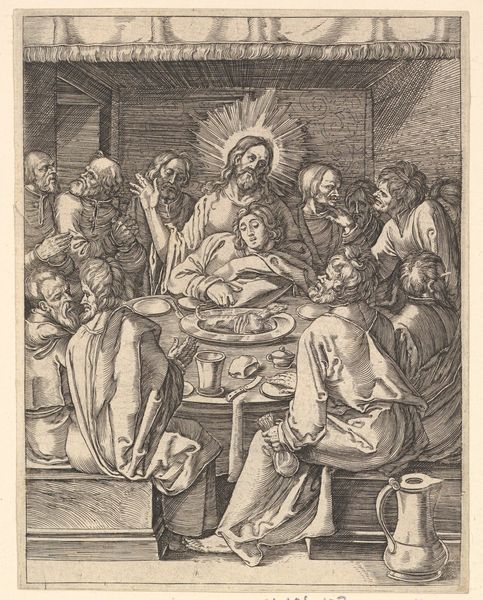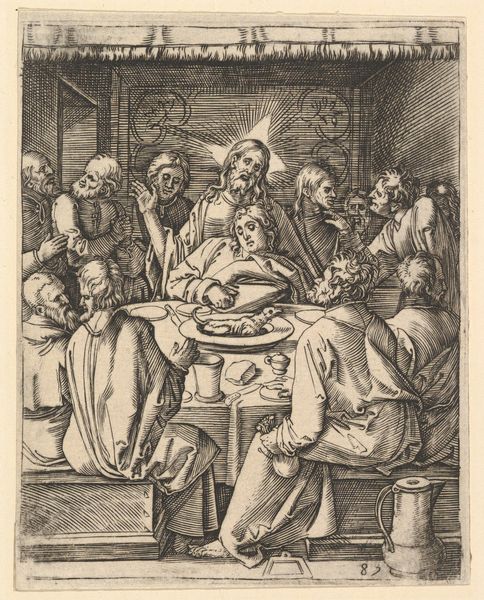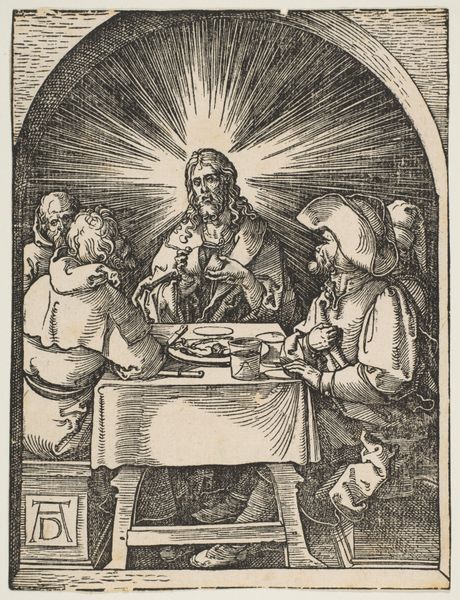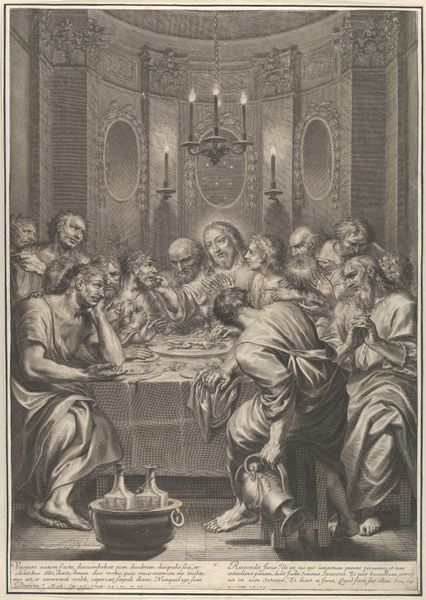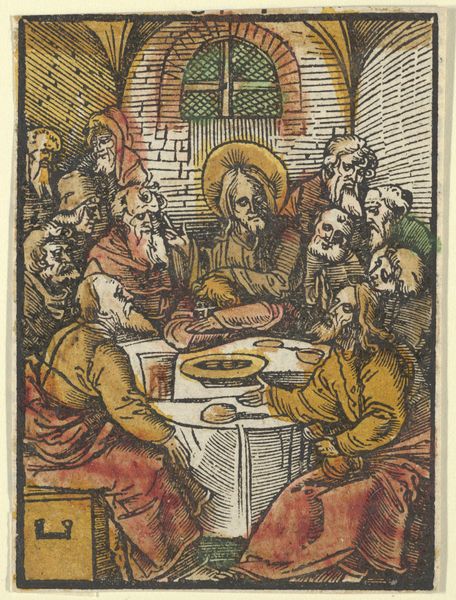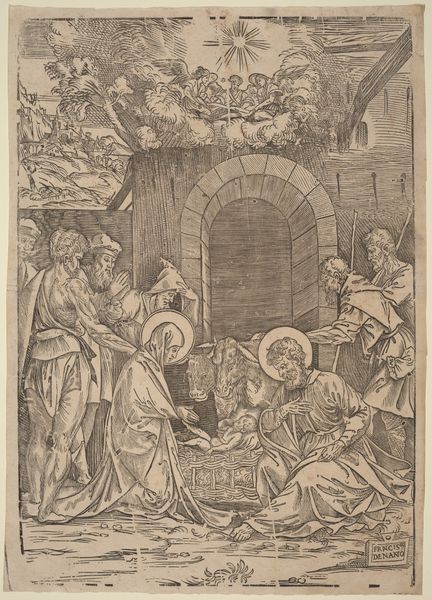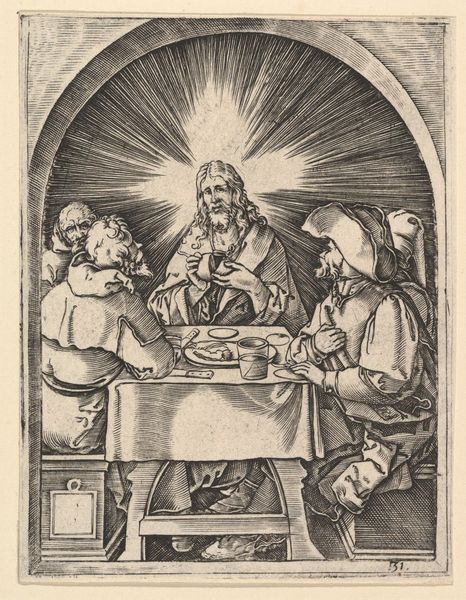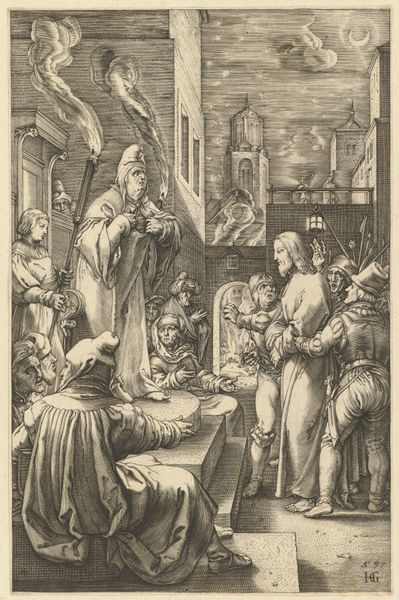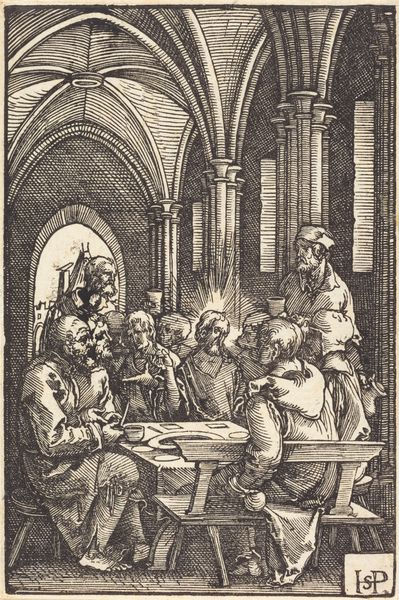
print, woodcut
#
narrative-art
# print
#
figuration
#
woodcut
#
history-painting
#
northern-renaissance
Copyright: National Gallery of Art: CC0 1.0
This woodcut, "Mary Magdalen Washing Feet of Christ," was created by Hans Wechtlin around the early 16th century. At its heart lies the act of foot-washing, rich with symbolism. Mary Magdalene, in a gesture of profound humility and repentance, washes Christ's feet, drying them with her hair. This motif echoes across time. It can be found, for example, in ancient Roman displays of fealty and supplication. Yet its Christian context transforms it. It’s not merely an act of submission but of deep love and recognition of the divine. The haloed figures denote divinity, a visual cue inherited from classical art. Over time, halos would evolve, sometimes fading into mere suggestions of light. The psychological weight here is palpable. Mary’s bowed head speaks to the pain of repentance, the longing for redemption, and the sheer devotion that transcends social boundaries. This very image, charged with emotion, engages the viewer on a subconscious level, evoking empathy and contemplation on themes of sin, forgiveness, and divine love.
Comments
No comments
Be the first to comment and join the conversation on the ultimate creative platform.
